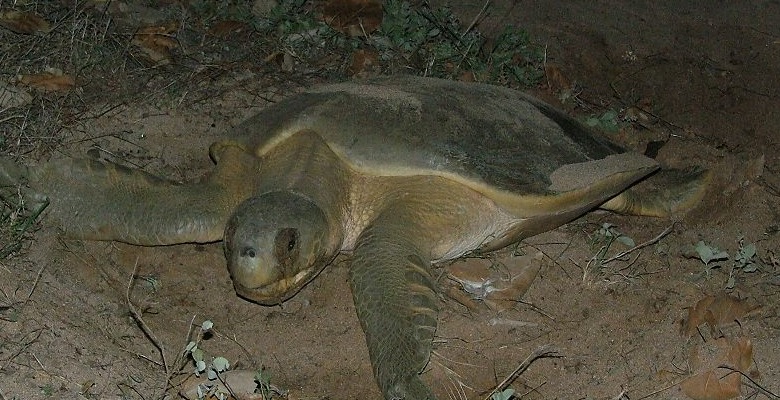Council's Nelly Bay Esplanade restoration project is hoping to welcome even more turtles nesting in beach sand stabilised by the scheme this turtle hatching season.
Turtle hatching season is from December to April and last season Council celebrated a significant milestone with a turtle nesting, for the first time, in beach sand stabilised by a Council-installed trial sandbag groyne.
Since the Nelly Bay Harbour construction years ago, no turtle nesting had been documented in the Nelly Bay Esplanade, next to the harbour, until this year's breakthrough in January.
A flatback sea turtle successfully nested adjacent to the Council-installed sandbag groyne in a section of beach that until recently, was continuously eroding.
Paul Groves and The Magnetic Island Network for Turtles (MINT) work tirelessly to support turtle nesting and rehabilitation on Magnetic Island and he was thrilled to see this landmark moment.
"We've been monitoring for 15 years but that is the first nest we've had at that end of Nelly Bay," Mr Groves said.
"We get a lot of nests at Nelly Bay but most of the time they are up the other end and this is the first turtler that's come to lay at that end of the beach. She came up and dug her nest where the sand had renourished the beach as a result of the groyne. The newly deposited sand resulted in a successful hatch of 40 baby turtles. A fantastic achievement given the threats turtles are faced with.
"Council's works at the Nelly Bay Esplanade are helping to provide more nesting habitats and the more beaches we have that are suitable for nesting the better. It's great for the flatbacks, which are our Australian endemic turtles."
Mr Groves helped launch MINT 10 years ago when they set-up the turtle hospital out of Council's old sewerage pumping plant at Horseshoe Bay.
"We have a long relationship with council, and they've been very supportive," Mr Groves said.
"Since setting up MINT we've been rescuing and rehabilitating turtles as well as monitoring nests right across the island. We get great support from our volunteers and members of the community who let us know when they see turtles."
As part of an ongoing Nelly Bay Esplanade restoration project, Council installed the Nelly Bay beach trial groyne in partnership with Maritime Safety Queensland three years ago. The groyne prevents beach sand from entering the harbour. This keeps it on the beach and reduces erosion impacts on the Esplanade. The groyne also acts to maintain tidal flows between the harbour and the sea.
Community Health, Safety and Environmental Sustainability Committee Chair Maurie Soars said Council has been transferring sand from Gustav Creek to Nelly Bay Esplanade for many years to reinstate the natural sand supply.
"Sand transferred by Council from Gustav Creek over the past three years can now accumulate on the beach and has enabled Council to build the beach forward while reducing the steepness of the beach and Esplanade erosion," Cr Soars said.
"Council's re-vegetation of a newly created dune along the Esplanade over the past two years has further reinstated a more natural and sustainable beach profile currently enjoyed by residents and tourists visiting the area.
"The sustainability of the Council Park and Esplanade Road into the future has also been at the forefront of these Council works."







